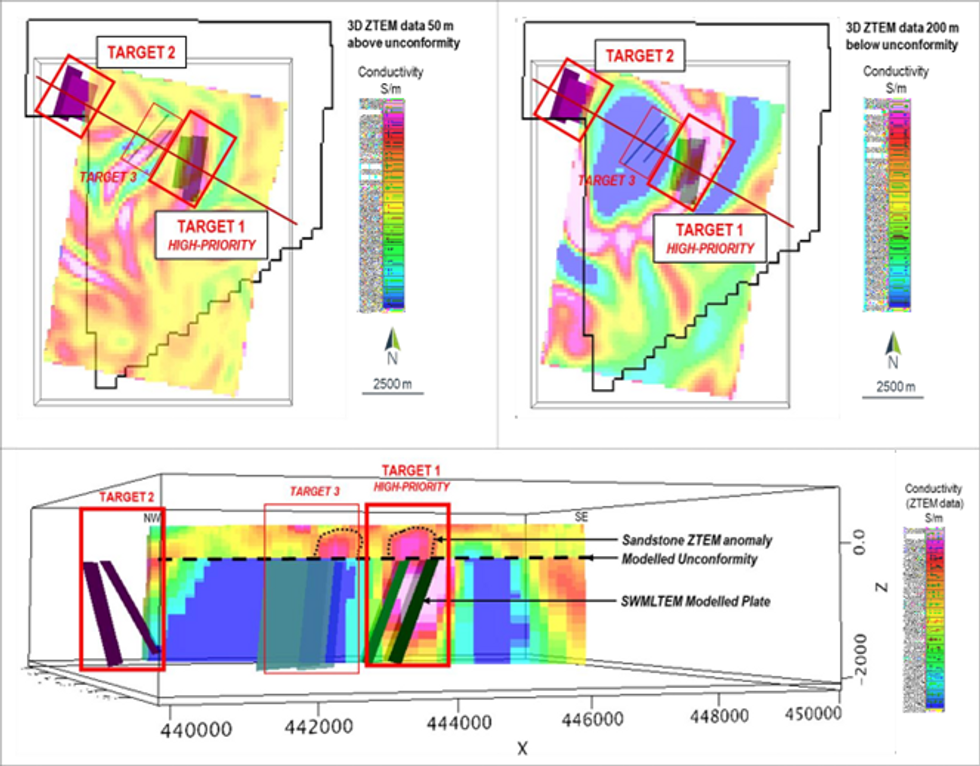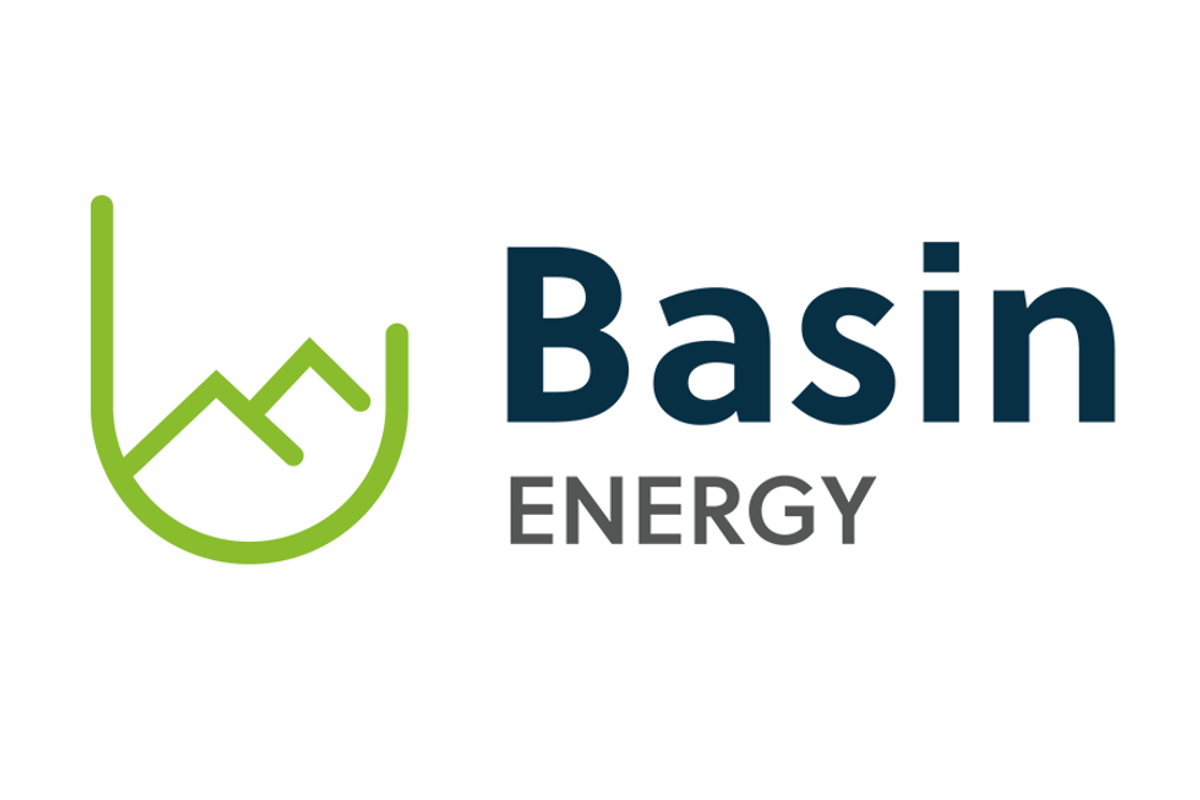
July 01, 2024
Basin Energy Limited (ASX:BSN) (‘Basin’ or the ‘Company’) is pleased to provide an update on the winter 2024 geophysical program that was conducted at the Marshall and North Millennium Uranium Projects (‘Marshall’, ‘North Millennium’ or the ‘Projects’), located in the southeastern part of the uranium-rich Athabasca Basin, refer to figure 3. The Southeastern Athabasca hosts some of the highest-grade uranium mines, with recent significant unconformity-related mineralisation discoveries occurring over the past few years1,2.
Key Highlights
- Final data received and interpretation completed for the ground electromagnetic geophysical surveys from the winter 2024 program at the Marshall and North Millennium projects.
- Several conductive anomalies identified at Marshall, located above and below the unconformity, consistent with regional exploration model.
- Stacked anomalies concurrently with multigenerational geophysical data provides a base to assess the exploration targets and refine drillhole targets.
- The projects are located 15 kilometres from the majority Cameco owned Millennium deposit, and just 40km from the world class McArthur River mine.
- Basin remains funded for the next round of field exploration.
The ground electromagnetic successfully identified 3 main targets which confirms the geological and exploration model. Of note is Target 1 (Figure 1), where modelled EM plates below the unconformity align with a sandstone ZTEM anomaly, which is interpreted to be alteration within sandstone. The identification of these targets is encouraging and consistent with regional trends in the southeastern Athabasca and provides increased confidence in drill hole targeting. Basin is currently reviewing options and priorities of how to progress exploration of these confirmed targets.
Basin’s Managing Director, Pete Moorhouse, commented:
“Conducting ground geophysical surveys on Marshall and North Millennium was a milestone in advancing these underexplored projects in Basin’s uranium portfolio. The form of these anomalies is highly encouraging given the proximity to some of the world’s largest uranium deposits.”
Key results
Following the encouraging conductive anomalism highlighted by the 2023 3D inversion of two historic airborne Electromagnetics (Z‐Tipper Axis) (“ZTEM”) datasets partially covering the current North Millennium and Marshall projects3,4, Basin contracted Discovery International Geophysics5 to carry out ground Stepwise Moving Loop Transient Electromagnetic (‘Ground EM’) surveys on areas of immediate interest within the Projects.

The 2024 Ground EM survey data returned six conductive anomaly picks producing three main target areas (Figure 1). The anomalies correlate strongly with the southern edge of the circular ZTEM conductive anomaly at Marshall and the interpreted northern edge of the circular anomaly identified in the historic data. A weaker EM pick was also interpreted centred between the two prominent ZTEM conductivity anomalies.
Three-dimensional modelling using Maxwell produced six electromagnetic conductive plates within the basement stratigraphy, all below the unconformity (Figure 1). The two southeastern plates are clearly aligning with a conductive sandstone ZTEM anomaly identified from the historic data, which is above the interpreted unconformity. This is interpreted as potential basal sandstone alteration proximal to the EM anomalies and constitutes a high-priority drill target area, refer figure 2.
Click here for the full ASX Release
This article includes content from Basin Energy, licensed for the purpose of publishing on Investing News Australia. This article does not constitute financial product advice. It is your responsibility to perform proper due diligence before acting upon any information provided here. Please refer to our full disclaimer here.
BSN:AU

Sign up to get your FREE
Basin Energy Investor Kit
and hear about exciting investment opportunities.
- Corporate info
- Insights
- Growth strategies
- Upcoming projects
GET YOUR FREE INVESTOR KIT
The Conversation (0)
31 August
Basin Energy
Targeting uranium and rare earth elements (REEs) in Australia, Canada, Sweden and Finland.
Targeting uranium and rare earth elements (REEs) in Australia, Canada, Sweden and Finland. Keep Reading...
17 December
Completes phase one drilling and expands Sybella-Barkly
Basin Energy (BSN:AU) has announced Completes phase one drilling and expands Sybella-BarklyDownload the PDF here. Keep Reading...
30 November
Expands REE and Uranium Footprint at Sybella-Barkly
Basin Energy (BSN:AU) has announced Expands REE and uranium footprint at Sybella-BarklyDownload the PDF here. Keep Reading...
30 November
Basin Energy Ltd Expands REE and Uranium Footprint at Sybella-Barkly
Perth, Australia (ABN Newswire) - Basin Energy Limited (ASX:BSN) (OTCMKTS:BSNEF) announced the expansion of its district-scale Sybella-Barkly REE and uranium project (the "Project"), where the Company is currently drilling for district-scale rare earth elements ("REE") and uranium targets (refer... Keep Reading...
23 November
Basin Energy Ltd Binding Sale Agreement Executed for Marshall Uranium Project
Perth, Australia (ABN Newswire) - Basin Energy Limited (ASX:BSN) (OTCMKTS:BSNEF) announced that it has entered into a binding letter of intent ("LOI") with Green Canada Corporation Inc ("GCC"), a 54% owned subsidiary of PTX Metals Inc. (CVE:PTX) to sell the Marshall Uranium Project ("Marshall"),... Keep Reading...
11 November
Drilling Commenced for Sybella-Barkly Uranium and Rare Earth
Basin Energy (BSN:AU) has announced Drilling commenced for Sybella-Barkly uranium and rare earthDownload the PDF here. Keep Reading...
Latest News

Sign up to get your FREE
Basin Energy Investor Kit
and hear about exciting investment opportunities.
- Corporate info
- Insights
- Growth strategies
- Upcoming projects
GET YOUR FREE INVESTOR KIT
Interactive Chart
Latest Press Releases
Related News
TOP STOCKS
American Battery4.030.24
Aion Therapeutic0.10-0.01
Cybin Corp2.140.00

